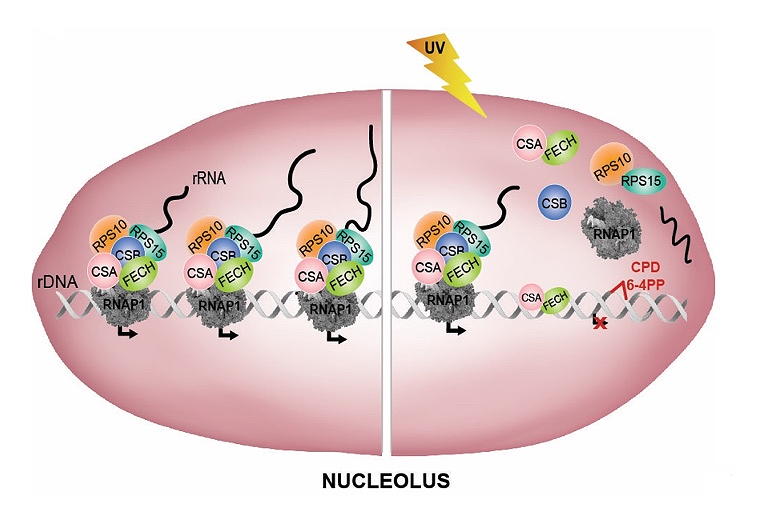New perspectives on the molecular mechanisms implicated in skin cancer development and skin photosensitivity
Recent studies coordinated by Donata Orioli at the “Luigi Luca Cavalli-Sforza” Institute of Molecular Genetics of the CNR, in collaboration with international research Institutes and the University of Siena, identified a signalling pathway implicated in skin cancer development. The same group also identified new molecular alterations associated with skin photosensitivity.
The studies, supported by the AIRC Foundation for Cancer Research, were published in the Proc. Natl. Acad. Sci. USA e Nucleic Acids Research journals, respectively.
Solar ultraviolet (UV) radiation is the major risk factor for cutaneous skin cancers. The ability of cells to constantly and accurately repair DNA lesions caused by UV light is a crucial step in preventing tumorigenesis. In humans, the removal of DNA photolesions is carried out by the nucleotide excision repair (NER) pathway whose alteration may result in distinct rare pathological conditions with different, even opposite, skin cancer proneness. While patients with xeroderma pigmentosum (XP) are characterized by high incidence of skin cancer, patients with trichothiodystrophy (TTD) or Cockayne syndrome (CS) do not develop tumors despite the NER defects and the consequent accumulation of unrepaired DNA lesions.
Comparative studies in skin cells from NER-defective patients identified specific transcriptional failures leading to the lack of prostaglandin I2 synthase (PTGIS) in the cancer-free TTD. In contrast, normal PTGIS levels are synthetized by the skin of the cancer-prone XP, even if mutated in the same gene and with similar NER defects as TTD. This study identifies the first biomarker for TTD disorder that correlates with the lack of skin cancer formation and opens new and promising therapeutic prospects.
The same team discovered that NER proteins and Ferrochelatase (FECH) take part to a unique protein complex regulating ribosomal transcription by RNA polymerase I (RNP1). Alterations in FECH leads to the erythropoietic protoporphyria (EPP) characterized by normal NER activity but extremely high sunlight sensitivity. The finding that EPP patients, similarly to CS, present altered ribosomal transcription opens new interpretations of the mechanisms underlying skin photosensitivity.

- Lombardi A, Arseni L, Carriero R, Compe E, Botta E, Ferri D, Uggè M, Biamonti G, Peverali FA, Bione S and Orioli D, 2021. Reduced levels of prostaglandin I2 synthase: a distinctive feature of the cancer-free trichothiodystrophy. PNAS https://doi.org/10.1073/pnas.2024502118
- Lanzafame M, Branca G, Landi C, Qiang M, Vaz B, Nardo T, Ferri D, Mura M, Iben S, Stefanini M, Peverali FA, Bini L and Orioli D. Cockayne syndrome group A and ferrochelatase finely tune ribosomal gene transcription and its response to UV irradiation.. 2021 Nucleic Acids Research. https://academic.oup.com/nar/advance-article-abstract/doi/10.1093/nar/gkab819/6377400.
